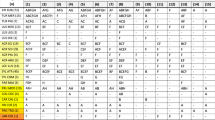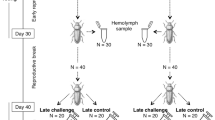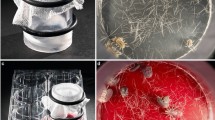Abstract
TICKS and insects develop and grow through intermittent replacement of their integument. This moulting does not occur beyond the adult stage, with the exception of primitive apterygote insects such as silverfish, which continue to moult and grow after they become sexually mature. Moulting ceases to occur in the pterygote adult insect because the glands secreting ecdysone, the hormone required to induce moulting, break down and disappear soon after the insect (and presumably also the tick) becomes adult1. The adult tissues of both hemimetabolous insects and those with complete metamorphosis continue to respond to ecdysone if exposed to it. There are, however, differences in the responsiveness of different segments of the insects and the resulting ‘super-moulted’ adult insects are usually defective2–5. We have found that ticks also retain the full potential to moult, grow and reproduce normally as adults if they receive ecdysone. Through successive adult moults ‘super ticks’ are obtained (Fig. 1) which consume very large volumes of blood and produce many more viable eggs than normal ticks.
This is a preview of subscription content, access via your institution
Access options
Subscribe to this journal
Receive 51 print issues and online access
$199.00 per year
only $3.90 per issue
Buy this article
- Purchase on Springer Link
- Instant access to full article PDF
Prices may be subject to local taxes which are calculated during checkout
Similar content being viewed by others
References
Wigglesworth, V. B., Insect Hormones, 12 (Oliver and Boyd, Edinburgh 1970).
Wigglesworth, V. B., J. exp. Biol., 17, 201 (1940).
Bodenstein, D., J. exp. Zool., 123, 189 (1953).
Williams, C. M., Biol. Bull., 124, 355 (1963).
Krishnakumaran, A., and Schneiderman, H. A., J. exp. Zool., 157, 293 (1964).
Youdeowei, A., and Mango, C., Proc. 4th Int. Bat Res. Conf., Kenya (in the press).
Kitaoka, S., Proc. 14th Int. Cong. Ent., Australia, 272 (1972).
Williams, C. N., in Chemical Ecology (edit. by Sondheimer, E., and Simeone, J. B.), 103 (Academic, New York, 1970).
Rohdendorf, E. B., and Watson, J. A. L., Insect Physiol., 15, 2085 (1969).
Sehnal, F., in Chemical Zoology, 337 (edit. by Florkin, M., and Scheer, B. T.), 337 (Academic, New York, 1971).
Author information
Authors and Affiliations
Rights and permissions
About this article
Cite this article
MANGO, C., ODHIAMBO, T. & GALUN, R. Ecdysone and the super tick. Nature 260, 318–319 (1976). https://doi.org/10.1038/260318a0
Received:
Accepted:
Issue Date:
DOI: https://doi.org/10.1038/260318a0
This article is cited by
-
Steroid hormones in Acari, their functions and synthesis
Applied Entomology and Zoology (2019)
-
Ultrastructure of the lateral organs in larvalArgas (Persicargas) arboreus (Ixodoidea: Argasidae)
Experimental & Applied Acarology (1989)
-
Effect of 20-hydroxyecdysone on neurosecretory cell activity in femaleHyalomma dromedarii synganglion (Acari: Ixodidae)
Experimental and Applied Acarology (1988)
-
Presence of ecdysone and ecdysterone in the tickAmblyomma hebraeum Koch
Experientia (1978)
-
The role of phytoecdysteroids in bracken fern,Pteridium aquilinum (L.) Kuhn as a defense against phytophagous insect attack
Journal of Chemical Ecology (1978)
Comments
By submitting a comment you agree to abide by our Terms and Community Guidelines. If you find something abusive or that does not comply with our terms or guidelines please flag it as inappropriate.



